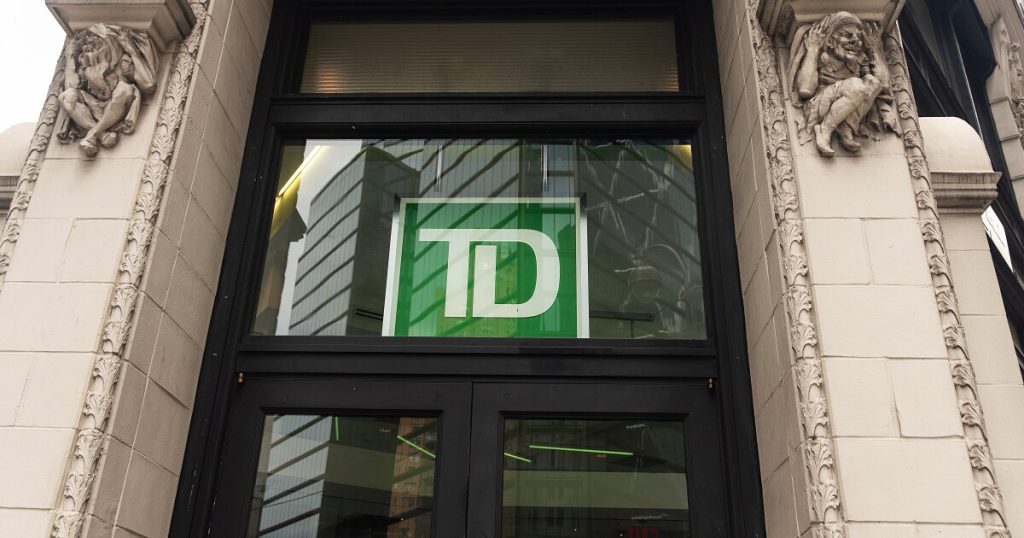UPDATE: This article includes information about TD’s U.S. operations, comments from TD executives and reaction from an analyst who covers the company.
TD Bank Group said its core U.S. business lines are showing momentum, but costs related to a balance-sheet restructuring and ongoing efforts to remedy anti-money-laundering compliance problems pushed down first-quarter profits in the company’s U.S. banking unit by 79%.
The $402 billion-asset U.S. banking unit reported earnings totaling $105 million from its retail banking business for the three months ended Jan. 31, down from $499 million a year earlier. Quarterly noninterest expenses for the U.S. retail segment, which includes the U.S. bank, fell 8% to $1.7 billion, but the results for the same three months a year earlier included a nonrecurring $300 million Federal Deposit Insurance Corp. special assessment.
The Canadian parent company, TD Bank Group, reported first-quarter earnings of $1.93 billion, essentially flat with the same three months in 2024. Earnings per share of CA$1.55 fell short of analysts’ expectations of CA$1.61, according to S&P.
Anti-money-laundering remediation costs totaled $86 million for the three months ended Jan. 31. TD reiterated its forecast of $500 million in pretax AML-related expenses for the full 2025 fiscal year. “I feel quite comfortable with that guidance,” Leo Salom, CEO of TD’s U.S. subsidiary, said Thursday on a conference call with analysts.
Some of those first-quarter expenses paid for improved monitoring technology and additional AML specialists, according to the company. “AML is our number-one priority, and we will continue to invest,” Group CEO Raymond Chun said on the call.
Chun took over as TD Bank Group’s CEO on Feb. 1, succeeding Bharat Masrani. The
Salom called 2025 a “transition year” in which the emphasis will be on remediation and strategic repositioning. That said, TD is seeing progress in some core U.S. business lines.
In TD’s wealth business, total client assets were $52 billion on Jan. 31, up 11% year over year. And while TD’s U.S. business deposit portfolio shrank, average U.S. retail deposits, which totaled $133.3 billion at Jan. 31, increased 3.4% from a year ago. TD also reported modest quarterly growth in its U.S. home equity and credit card portfolios.
As part of efforts to downsize its U.S. assets and reposition its investment portfolio, TD reported selling bonds totaling US$13.1 billion in the first quarter. Bond sales have continued into February.
TD’s bond sales since Oct. 10, when the company unveiled its restructuring program, total $19 billion, according to Salom. The sales have resulted in $1.1 billion in pretax losses, but they’re expected to lift net interest income in 2025 as TD reinvests the proceeds in higher-yielding instruments.
Though they didn’t provide a target, both Salom and TD Bank Group Chief Financial Officer Kelvin Tran told analysts the U.S. net interest margin, currently 2.86%, would increase substantially during the remainder of fiscal 2025, powered by tailwinds from continued sales of securities and assets.
Since the end of January, TD has announced two significant transactions,
The mortgage sale generated a $600 million loss, but Salom told analysts that TD would use some of the proceeds to continue retiring debt. TD reported paying down $25 billion in short-term debt during the first quarter. The company is about halfway through a
The process “has not had a dire impact on earnings,” Jeffries analyst John Aiken wrote Thursday in a research note. Indeed, TD expects to complete the restructuring by the end of June with a net interest income benefit at the upper end of its previously disclosed $300 million to $500 million range.
While Salom made a point of underlining Chun’s comments about AML remediation being TD’s most pressing issue, he said the restructuring that’s been accomplished to date could allow the bank to invest in some carefully curated growth initiatives.
“I think that some of the work that we’re doing will allow us to be able to invest selectively in the areas that I think will be critical for our future, whether that be cards, wealth or digital strategy,” Salom said.

